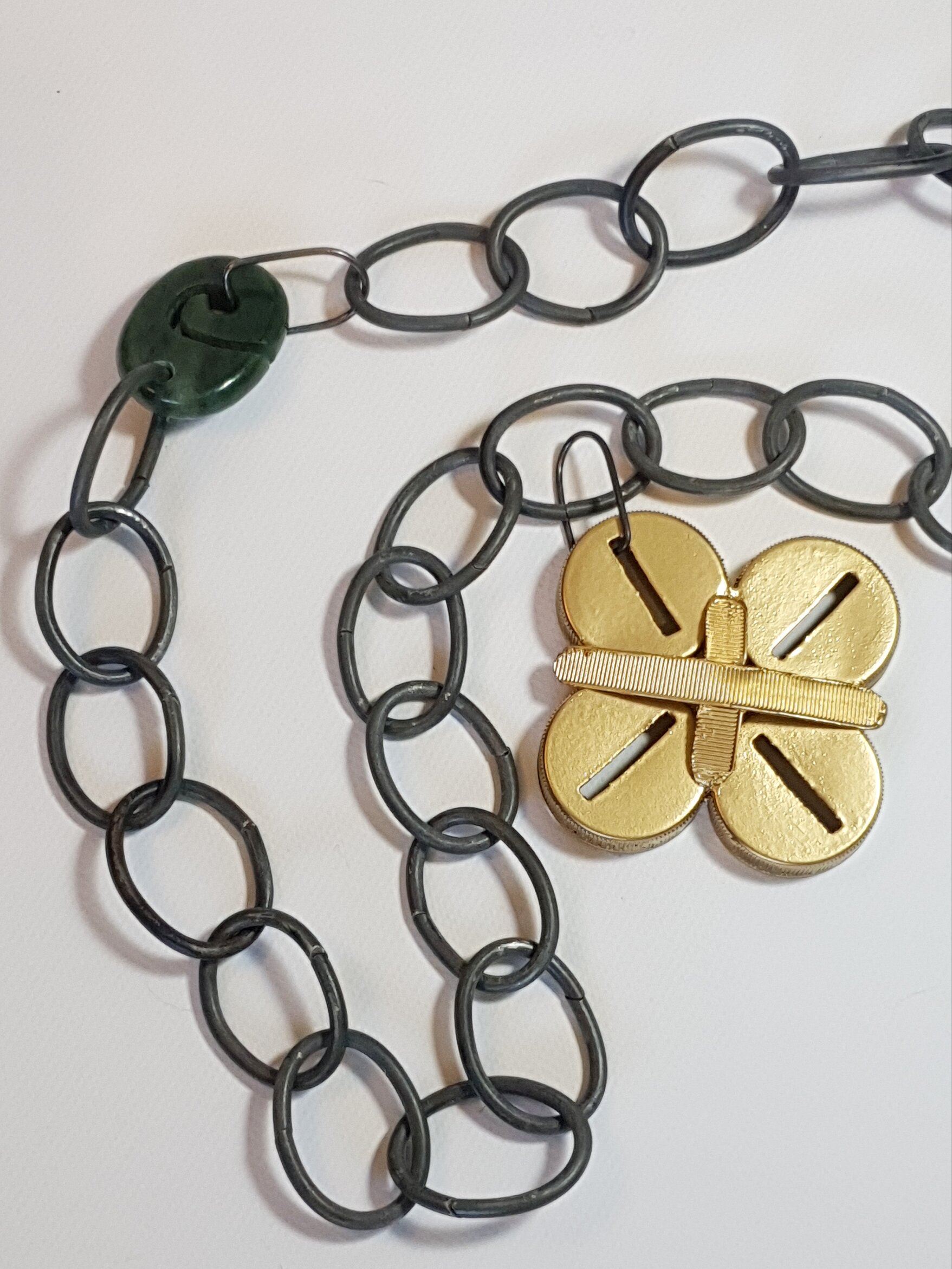Lifeblood, 2021.
Number 8 wire, pounamu, milk bottle caps, gold paint, silver.
Farming is often referred to as the lifeblood of the New Zealand economy. While it is the farms that bring food to our tables, there's still a struggle to improve how farming is done, in terms of our relationship with the environment. Within this struggle are competing value systems which Lifeblood symbolically represents through materiality . The golden 'union jack' represents colonial values. Land is a thing to be industrialized, monetized and owned. The fake gold-plastic prompts us to question these values and consider the environmental impact. In stark contrast is the pounamu, upon which the chain is hinged. This represents Maori indigenous values. Land is taonga, all living things are part of the whakapapa, literal lifeblood. There is a vast difference in the tactility of the two figureheads; the union jack feels light and flimsy, the gold paint a waxy veneer, while the pounamu is smooth, heavy and cool, radiating strength as a conduit for the natural world.
Number 8 wire is a symbol of ‘Kiwi ingenuity’. It is a ubiquitous material on farms, used for the fences that trace the borders of land as property. The wire chain connects the two value systems into a wearable piece. The chain becomes a pathway between the two and reflects upon social and ecological connections. We are linked even as a country with a complex colonial history. The balance in the hierarchy of values must change, the weight of this piece worn on the body is key to this understanding. Sustainability requires unity: with each other, the natural world, one home, one Lifeblood.










